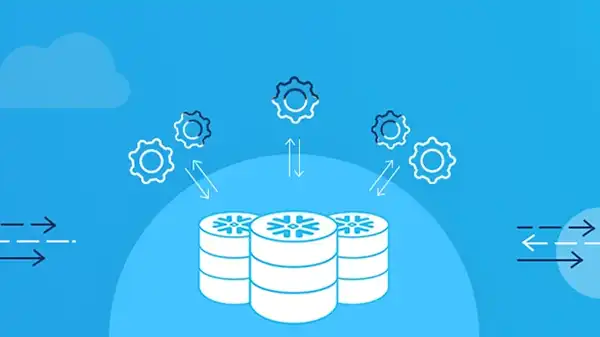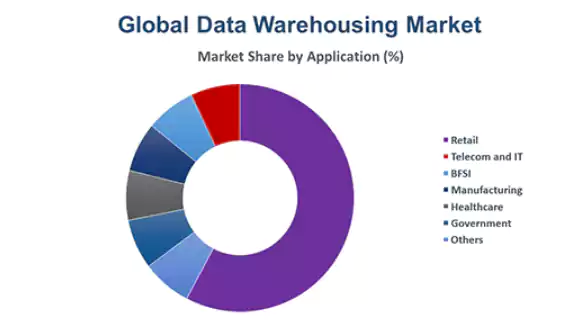Unveiling the Magic of Snowflake Architecture and ETL

Key Takeaways
- The ETL procedure of snowflake architecture addresses the issues of data management and application.
- The combination of ETL and snowflake architecture can bring promising results in operations and in enhancing data quality.
- There exist some drawbacks such as data governance, cost management, and more.
- With the help of snowflake ETL, businesses can easily extract, transform, and load data for analysis and unlock new possibilities
Data helps tech firms grow. As its volumes grow, so does the significance of managing, storing, and analyzing them. The problems of data management and application are addressed by the Extract, Transform, and Load (ETL) procedure of the Snowflake architecture.
This article delves into its advantages and ETL and how they complement one another to provide a unified information experience.
The Marvel of Snowflake Architecture
They are delicate but complex. Data warehousing’s Snowflake architecture is innovative.
Cloud-based ones can handle massive amounts of figures. Traditional architectures are rigid and complex.
Key Components of Snowflake Architecture
Cloud-Based Infrastructure:
It is cloud-native. Cloud platforms enable scaling up and down without hardware provisioning.
Separation of Compute and Storage:
Snowflake architecture divides computing and storage. Centralized details and adjustable compute capacity. Splitting simplifies queries and analyses.
Multi-Cluster Shared Data Architecture:
Its multi-cluster shared data architecture lets computer clusters process information simultaneously without interfering. Parallel processing speeds up data processing.
Instant Cloning:
This helps teams quickly copy databases for testing or analysis without duplicating the info. Time and money saved shorten development cycles.
The Intricacies of Snowflake ETL
After laying the groundwork, we can shift our focus to ETL, a pivotal step in getting data ready for analysis.
Extract:
ETL begins with its extraction from multiple sources. These sources include spreadsheets, databases, third-party programs, and APIs.
Snowflake ETL Tools supports several extraction techniques, enabling seamless data integration from various sources.
Transform:
Data extraction precedes transformation. This step cleans, structures, and enriches information for analysis.
Snowflake ETL provides a variety of transformation capabilities, ranging from straightforward operations like data cleaning to more intricate ones like aggregations, joins, and enrichment.
Load:
After transformation, the figures are loaded into the Snowflake data warehouse. Its compute-storage separation ensures efficient loading without affecting analysis or queries.
Reporting and querying are easier with tabular ones.
Snowflake Architecture and ETL in Synchronization
When Snowflake architecture and ETL are combined, amazing things can happen. Let us look at how well they pair up with one another.
Scalability:
Snowflake’s adaptability meets table balancing requirements. Its dynamic resource allocation ensures that ETL jobs run uninterrupted as data volumes increase during extraction and transformation.
Performance:
This software accelerates the combining data operations by separating insights and processing layers. Transformation may require complex calculations and manipulations.
Due to its parallel processing, these operations are completed quickly.
Data Quality:
The transformation stage of Snowflake ETL is paramount for ensuring information quality. This software cleans, organizes, and validates it for analysis. Its data processing improves insights.
Benefits Galore
The combination of Snowflake architecture and ETL offers businesses a wealth of advantages.
Flexibility:
Companies can scale resources with its cloud-native architecture. Its flexibility optimizes resource utilization for peak info loads or smaller datasets.
Cost-Efficiency:
This software eliminates hardware investments with pay-as-you-go cloud pricing and on-demand scaling. This inexpensive method handles ETL process variability.
Time Savings:
It’s fast cloning and table balancing save time. Database cloning speeds development. Faster ETL jobs inform decisions.
Data-Driven Insights:
Snowflake and ETL enable data-driven insights. Its clean, structured details and analytics provide strategic insights.
Do You Know?
The data warehousing market is expected to grow at a CAGR of 12% during the forecasted period between 2019 and 2025.
Challenges and Considerations
ETL and snowflake design provide numerous benefits, but companies must consider possible drawbacks.
- Data Governance: During the combining data process, its quality and governance are pertinent. It has to be cleaned up and verified by businesses to be error-free and compliant.
- Complexity: Traditional information warehouse teams may still need to understand this software as it needs instruction and assistance.
- Data Integration: Snowflake ETL supports a wide range of data sources. However, older systems and unique info formats could require additional effort. It is vital to integrate it without interfering with processes.
- Cost management: The pay-as-you-go concept of cloud computing is economical but requires resource monitoring. Unplanned costs may result from improperly designed ETL tasks or data storage.
Security is necessary for its extraction, transformation, and loading. Strong encryption, access restrictions, and authentication are all necessary for its security.
Best Practices for Success
Snowflake architecture and ETL can be optimized with a few best practices:
Plan Ahead:
Start with data and extract, transform, and load requirements. A well-planned strategy eliminates surprises.
Leverage Automation:
Utilize automation tools to streamline ETL processes. Automated workflows reduce human error, time, and efficiency.
Optimize Queries:
Use Snowflake’s query optimization. Optimized queries improve performance and resource management.
Monitor and Maintain:
Monitor both processes regularly. Identifying bottlenecks, improving performance, and controlling costs.
Invest in Training:
Train your team in both. A skilled team can maximize these technologies.
Future Horizons
Technology will likely change this duo synergy. Automation, AI-driven data transformations, and closer ML pipeline integration are expected.
The Snowflake ecosystem may expand, giving companies more ETL (extract, transform, and load) tools.
Real-World Success Stories

Let us examine a few case studies demonstrating Snowflake architecture’s and ETL’s game-changing potential in practical settings.
Retail Analytics Enhancement
A global retailer struggled to manage insights from multiple sources. They needed an information consolidation solution to understand consumer behavior, inventory control, and sales trends.
The retailer used this software for their data warehousing strategy. Cloud-native features made it easier to integrate from multiple sources. The real change, however, occurred after Snowflake ETL was put into action.
It simplified retailer data extraction and transformation. Extracted, cleansed, and structured point-of-sale, e-commerce, and inventory databases. Snowflake’s data warehouse analyzed structured information.
The result was remarkable. The retailer optimized inventory and used real-time sales trends to price and promote. This duo improved business agility and analytics.
Healthcare Data Integration
A healthcare organization struggles to integrate medical devices, EHR, and patient management systems info. Harmonizing these sources would improve patient care and research.
Snowflake Architecture managed healthcare details. Medical information scaled its cloud-based infrastructure. Snowflake ETL transformed its integration.
It cleaned, standardized, and enriched medical data for the healthcare organization. The data warehouse received this transformed information, creating a single source of medical insights.
It was significant. Clinicians could better diagnose and treat patients with unified patient details. Multiple medical datasets can advance research. Their combination seamlessly improved patient care and medical progress.
Conclusion
Snowflake architecture and ETL magically transform data into insights. Data warehousing is efficient with its delicate cloud-native architecture and compute-storage separation.
With Snowflake ETL, businesses can easily extract, transform, and load info for analysis and unlock new possibilities. Snowflake architecture and ETL help businesses manage it as technology changes.
This dynamic duo helps businesses find data treasures to innovate and grow in an information-driven world.








